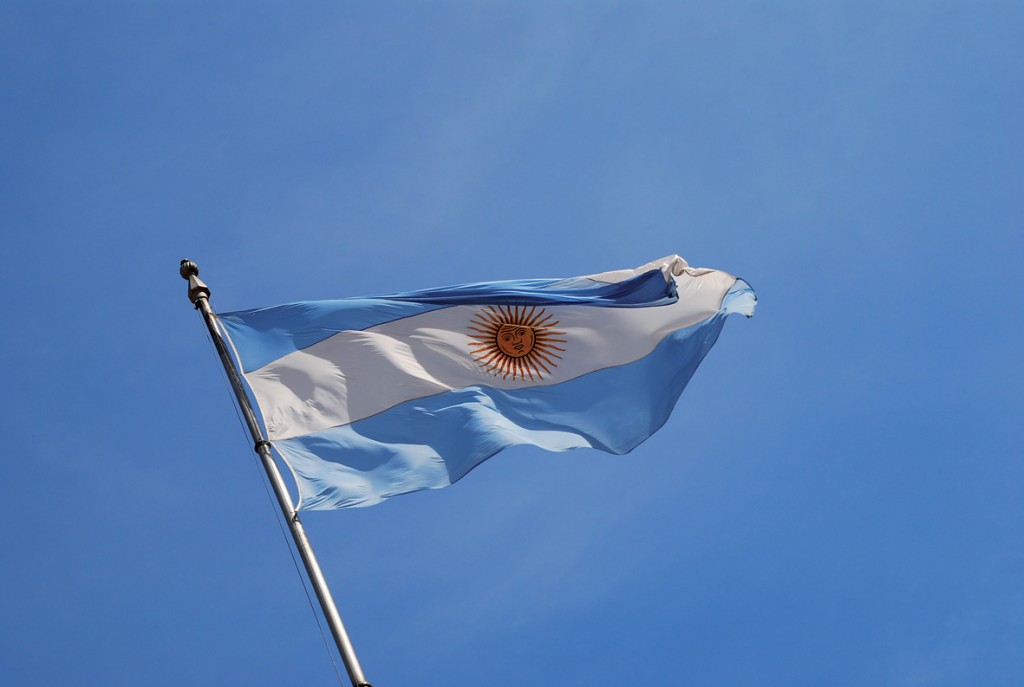
Argentina flag
Plaza de Mayo is known by all Argentineans as the focal point for protests and political activism within the country and (since being the scene of the revolution on 25 May 1810, which led to independence), it has been the setting for Argentina’s most politically turbulent moments.
The origins of the Plaza de Mayo can be traced back to 1580 when the Spanish conquistador Juan de Garay founded the city of Buenos Aires. He set the area aside as part of the future development of the city. However, his plans did not materialize and in 1608 Jesuit clergymen secured a right to much of the land. In 1661, part of the land was purchased for inclusion within the grounds of the city’s new fort and soon became the Plaza de Armas.
In 1804, following a hundred and fifty years of overuse and then neglect, the plaza underwent a modification and an arcade, Recova Vieja (Old Arcade) was built. This Romanesque structure became the plaza’s market and the area to the west of the colonnade became the Plaza de la Victoria.
The area took its present shape in 1883 when the city mayor, Torcuato de Alvear decided to modernize the area. As a result, the colonnade Recova Vieja was demolished and converted into the space into what is today called Plaza de Mayo.
Historical Events:
On 17th October 1945, the Plaza de Mayo saw mass demonstrations organized by the CGT trade union federation, which resulted in the release from prison of Juan Domingo Perón (who later became President of Argentina). During his tenure 17th supporters of the ‘Peronist’ movement who gathered in the plaza on this date every year to show their support for their leader. In fact to this day October 17 is still “Loyalty Day” for the traditional Peronists.
On 17th October 1951, Eva Perón (the first Lady of Argentina), who was dying of cancer, gave her last and most memorable speech from the balcony of the presidential palace, the Casa Rosada (the Pink House). Her powerful charisma and civil rights campaigning helped to make Eva Perón a living saint for many Argentineans.
On 16 June 1955 Plaza de Mayo was once again the focal point for Peronist supporters who gathered for one of the populist leader’s many rallies. However, the day was to end in tragedy and bloodshed as the plaza was bombed by anti-Peronist forces killing over 300 people (mostly civilians). Shrapnel damage from the air strike can still be seen on many of the surrounding buildings.
Crowds gathered once again on 2ndPresident Leopoldo Galtieri and support his invasion of the Falkland Islands (Guerra de Las Malvinas). October became an important date for April 1982 and several occasions there after to hail de facto
More recently in December 2001, the Plaza became a battle ground between the Police and protesters who were unhappy about government cut backs and national debt. Over 22 people were killed in clashes that erupted all over the country.
In the centre of the Plaza de Mayo is the Pirámide de Mayo which was erected in 1811 to celebrate the anniversary of the May revolution that took place the year before. Today it is the focal point for the Madres de la Plaza de Mayo (Mothers of May Square) who have gathered there every Thursday since 1977 to demand justice for ‘los desaparecidos’ (the disappeared) the people who were perceived to be supportive of subversive activities during the military government’s reign from 1976 to 1983. During this period people would be illegally detained, subjected to abuse and torture, and finally murdered in secret.
Will Rist
Sunvil Traveller






